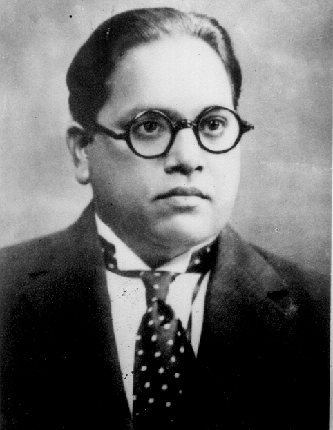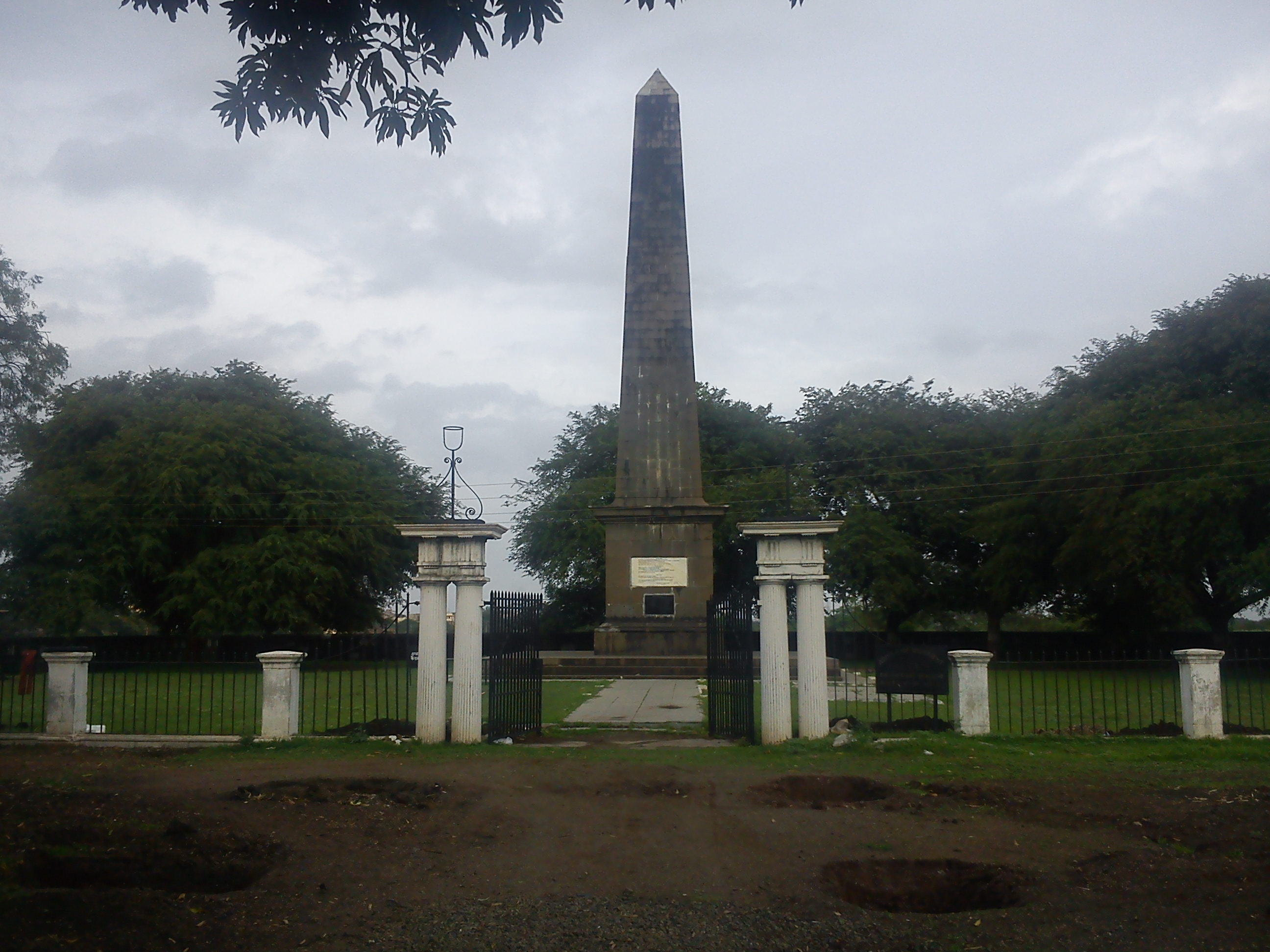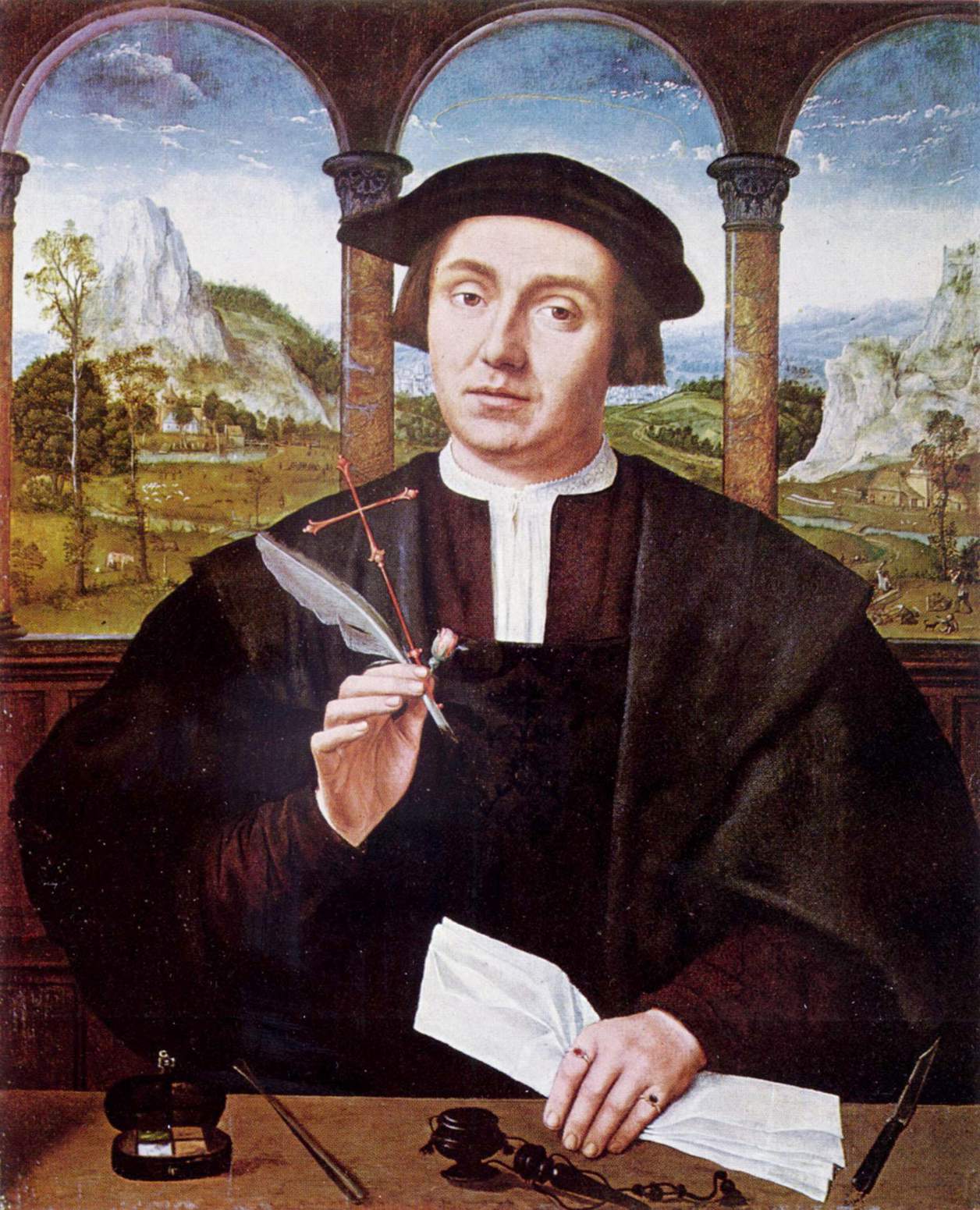|
Namantar Shahid Smarak
The Namantar Shahid Smarak (English: Name Change Martyrdom Memorial) is a large memorial sculpture dedicated to those who died in the Namantar Andolan. The Namantar Andolan was a 1978 to 1994 movement in India by Dalits (formerly known as Untouchables) who wanted to rename a university in honour of a leading Dalit, B. R. Ambedkar. The movement was vigorously opposed by members of the Hindu community. During 16 years of struggle, there were murders, torture, rapes, burning of colonies, poisoning of wells, property damage, boycotts and lockouts. In 2013, 19 years after the movement's success, the city government of Nagpur erected this monument in memory of the valour and the sacrifice of Dalit martyrs. Background The Dalits of India were on the bottom of the Indian caste system for millennia. In Hinduism, there are four ''varnas'' (classes) and in that system, the Dalits are below the lowest of them. Dalits were considered polluted and this pollution was considered contagious. ... [...More Info...] [...Related Items...] OR: [Wikipedia] [Google] [Baidu] |
Nagpur
Nagpur (pronunciation: aːɡpuːɾ is the third largest city and the winter capital of the Indian state of Maharashtra. It is the 13th largest city in India by population and according to an Oxford's Economics report, Nagpur is projected to be the fifth fastest growing city in the world from 2019 to 2035 with an average growth of 8.41%. It has been proposed as one of the Smart Cities in Maharashtra and is one of the top ten cities in India in Smart City Project execution. In the latest rankings of 100 developing smart cities given by the Union Ministry of Urban Development, Nagpur stood first in Maharashtra state and second in India. Known as the "Orange City", Nagpur has officially become the greenest, safest and most technologically developed city in the Maharashtra state. Nagpur is the seat of the annual winter session of the Maharashtra state assembly. It is a major commercial and political center of the Vidarbha region of Maharashtra. In addition, the city derives un ... [...More Info...] [...Related Items...] OR: [Wikipedia] [Google] [Baidu] |
Bhimrao Ramji Ambedkar
Bhimrao Ramji Ambedkar (14 April 1891 – 6 December 1956) was an Indian jurist, economist, social reformer and political leader who headed the committee drafting the Constitution of India from the Constituent Assembly debates, served as Law and Justice minister in the first cabinet of Jawaharlal Nehru, and inspired the Dalit Buddhist movement after renouncing Hinduism. Ambedkar graduated from Elphinstone College, University of Bombay, and studied economics at Columbia University and the London School of Economics, receiving doctorates in 1927 and 1923 respectively and was among a handful of Indian students to have done so at either institution in the 1920s. He also trained in the law at Gray's Inn, London. In his early career, he was an economist, professor, and lawyer. His later life was marked by his political activities; he became involved in campaigning and negotiations for India's independence, publishing journals, advocating political rights and social freedo ... [...More Info...] [...Related Items...] OR: [Wikipedia] [Google] [Baidu] |
Buildings And Structures In Nagpur
A building, or edifice, is an enclosed structure with a roof and walls standing more or less permanently in one place, such as a house or factory (although there's also portable buildings). Buildings come in a variety of sizes, shapes, and functions, and have been adapted throughout history for a wide number of factors, from building materials available, to weather conditions, land prices, ground conditions, specific uses, prestige, and aesthetic reasons. To better understand the term ''building'' compare the list of nonbuilding structures. Buildings serve several societal needs – primarily as shelter from weather, security, living space, privacy, to store belongings, and to comfortably live and work. A building as a shelter represents a physical division of the human habitat (a place of comfort and safety) and the ''outside'' (a place that at times may be harsh and harmful). Ever since the first cave paintings, buildings have also become objects or canvasses of much arti ... [...More Info...] [...Related Items...] OR: [Wikipedia] [Google] [Baidu] |
Tourist Attractions In Nagpur
Tourism is travel for pleasure or business; also the theory and practice of touring, the business of attracting, accommodating, and entertaining tourists, and the business of operating tours. The World Tourism Organization defines tourism more generally, in terms which go "beyond the common perception of tourism as being limited to holiday activity only", as people "travelling to and staying in places outside their usual environment for not more than one consecutive year for leisure and not less than 24 hours, business and other purposes". Tourism can be domestic (within the traveller's own country) or international, and international tourism has both incoming and outgoing implications on a country's balance of payments. Tourism numbers declined as a result of a strong economic slowdown (the late-2000s recession) between the second half of 2008 and the end of 2009, and in consequence of the outbreak of the 2009 H1N1 influenza virus, but slowly recovered until the COVID-1 ... [...More Info...] [...Related Items...] OR: [Wikipedia] [Google] [Baidu] |
Monuments And Memorials In Maharashtra
A monument is a type of structure that was explicitly created to commemorate a person or event, or which has become relevant to a social group as a part of their remembrance of historic times or cultural heritage, due to its artistic, historical, political, technical or architectural importance. Some of the first monuments were dolmens or menhirs, megalithic constructions built for religious or funerary purposes. Examples of monuments include statues, (war) memorials, historical buildings, archaeological sites, and cultural assets. If there is a public interest in its preservation, a monument can for example be listed as a UNESCO World Heritage Site. Etymology It is believed that the origin of the word "monument" comes from the Greek ''mnemosynon'' and the Latin ''moneo'', ''monere'', which means 'to remind', 'to advise' or 'to warn', however, it is also believed that the word monument originates from an Albanian word 'mani men' which in Albanian language means 'remember ... [...More Info...] [...Related Items...] OR: [Wikipedia] [Google] [Baidu] |
History Of Maharashtra (1947–present)
Maharashtra is a state in the western region of India. It is India's second-most populous state and third-largest state by area. The region that comprises the state has a long history dating back to ca. 1300–700 BCE, although the present-day state was not established until 1960 CE. Prior to Indian independence, notable dynasties and entities that ruled the region include, in chronological order, the Maurya, the Western Satraps, the Satavahana dynasty, Rashtrakuta dynasty, Western Chalukya Empire, Western Chalukyas, the Bahmani Sultanate, Bahamanis, Deccan sultanates, Mughal Empire, Mughals, the Maratha Empire founded by Shivaji, and the British Raj, British. Ruins, monuments, Tomb, tombs, forts, and places of worship left by these rulers are dotted around the state. At the time of the Indian independence movement in the early 20th century, along with British ruled areas of Bombay presidency, and Central Provinces and Berar. The region included many British princely states, vass ... [...More Info...] [...Related Items...] OR: [Wikipedia] [Google] [Baidu] |
Battle Of Koregaon
The Battle of Koregaon was fought on 1 January 1818 between the British East India Company and the Peshwa faction of the Maratha Confederacy, at Koregaon Bhima. A 28,000-strong force led by Peshwa Baji Rao II whilst on their way to attack the company-held Pune, were unexpectedly met by an 800-strong Company force that was on its way to reinforce the British troops in Pune. The Peshwa dispatched around 2,000 soldiers to attack the force which sought entrenchment in Koregaon. Led by Captain Francis Staunton, the Company troops defended their position for nearly 12 hours, before the Peshwa's troops ultimately withdrew, fearing the imminent arrival of a larger British force. The battle was part of the Third Anglo Maratha war, a series of battles that culminated in the defeat of the Peshwa rule and subsequent rule of the British East India Company in nearly all of Western, Central and Southern India. There is a "victory pillar" (obelisk) in Koregaon commemorating the battle. Back ... [...More Info...] [...Related Items...] OR: [Wikipedia] [Google] [Baidu] |
Advocate
An advocate is a professional in the field of law. Different countries' legal systems use the term with somewhat differing meanings. The broad equivalent in many English law–based jurisdictions could be a barrister or a solicitor. However, in Scottish, Manx, South African, Italian, French, Spanish, Portuguese, Scandinavian, Polish, Israeli, South Asian and South American jurisdictions, "Advocate" indicates a lawyer of superior classification. "Advocate" is in some languages an honorific for lawyers, such as " Adv. Sir Alberico Gentili". "Advocate" also has the everyday meaning of speaking out to help someone else, such as patient advocacy or the support expected from an elected politician; this article does not cover those senses. Europe United Kingdom and Crown dependencies England and Wales In England and Wales, Advocates and proctors practiced civil law in the Admiralty Courts and also, but in England only, in the ecclesiastical courts of the Church of Engla ... [...More Info...] [...Related Items...] OR: [Wikipedia] [Google] [Baidu] |
Samata Sainik Dal
Samata Sainik Dal, (''Army of Soldiers for Equality'' or ''Party of the Fighters for Equality'') abbreviated as SSD, is a social organisation founded by B. R. Ambedkar on 24 September 1924 with the objective of safeguarding the rights of all oppressed sections of Indian society. All India Equality Force Awards * Dr. Ambedkar National Award (2012) Gallery File:Volunteering at Chaitya Bhoomi.png, Lakhs of people around India gather at Chaitya Bhoomi to pay homage to B R Ambedkar on Mahaparinirvan Din. Volunteers take part in many activities. File:Volunteer of Samata Sainik Dal at Chaity Bhoomi.png, Volunteer of Samata Sainik Dal at Chaitya Bhoomi Chaitya Bhoomi (IAST: ''Caityabhūmī'', Officially: ''Dr. Babasaheb Ambedkar Mahaparinirvan Memorial'') is a Buddhist chaitya and the cremation place of B. R. Ambedkar, the chief architect of the Indian Constitution. It is situated besides D ... References External links * {{DEFAULTSORT:Samata Sainik Dal Organizations e ... [...More Info...] [...Related Items...] OR: [Wikipedia] [Google] [Baidu] |
Lathi Charge
A baton charge is a coordinated tactic for dispersing crowds of people, usually used by police or military in response to public disorder. In South Asia, a long bamboo stick, called ''lathi'' in Hindi, is used for crowd control, and the expression lathi charge commonly employed to describe the action. The tactic involves police officers charging at a crowd of people with batons and in some cases, riot shields. They run at the crowd hitting people with their batons, and in some situations use riot shields to push them away. Baton charging is designed to cause pain or fear of pain, in the hope that they would be compelled to move away from the scene, dispersing the public who are crowded. South Asia In South Asia, notably India, Bangladesh, Pakistan, and Sri Lanka, a long bamboo stick, or staff, called '' lathi'' is used for crowd control. Some Indian police forces use lathis around long, but in other places lathis are shorter. The term lathi charge is used by the Indian m ... [...More Info...] [...Related Items...] OR: [Wikipedia] [Google] [Baidu] |
Jogendra Kawade
Jogendra Laxman Kawade (born 1 April 1943, Nagpur) is an Indian politician, professor and social activist. He is the founder and the president of the Peoples Republican Party. He is one of notable activists in Ambedkarite movement. Kawade was a former MP from Chimur Lok Sabha constituency of Maharashtra in 12th Lok Sabha during 1998-99. He was a former member of Maharashtra Legislative Council The Maharashtra Vidhan Parishad or Maharashtra Legislative Council is the upper house of the bicameral legislature of Maharashtra state in western India. Location The seat of the Vidhan Parishad is situated at the Nariman Point area of South M .... References {{DEFAULTSORT:Kawade, Prof Jogendra 1943 births Politicians from Nagpur India MPs 1998–1999 Living people Lok Sabha members from Maharashtra Members of the Maharashtra Legislative Council Marathi politicians Republican Party of India politicians People from Chandrapur district Indian economists Indian Buddhi ... [...More Info...] [...Related Items...] OR: [Wikipedia] [Google] [Baidu] |







